The construction industry is the most dangerous in the world that’s why construction remote monitoring is essential; at least 108 thousand workers are killed on site every year. This figure shows that about 30% of all occupational fatal injuries.
When it comes to fatal accidental deaths among all industries, the construction industry is on top of this list. With this remote monitoring can provide insights into potential risks and issues on construction sites.
And another biggest threat to construction sites is the theft of resources. According to the Crime Prevention program, California is listed among the top five US state that has a large number of theft.
This is where construction remote monitoring comes into play. By closely observing activities and conditions, project teams can identify safety hazards, equipment malfunctions, or environmental concerns.
However, the project manager can only be in one place at one time, this technology enables the contractor or manager to oversee every site of the job at once and from a distance.
Currently setting up these technologies can leverage both workers and managers. With this being said, let’s dive into the blog where we are going to discuss everything related to construction remote monitoring.
What Is Remote Construction Site Monitoring?
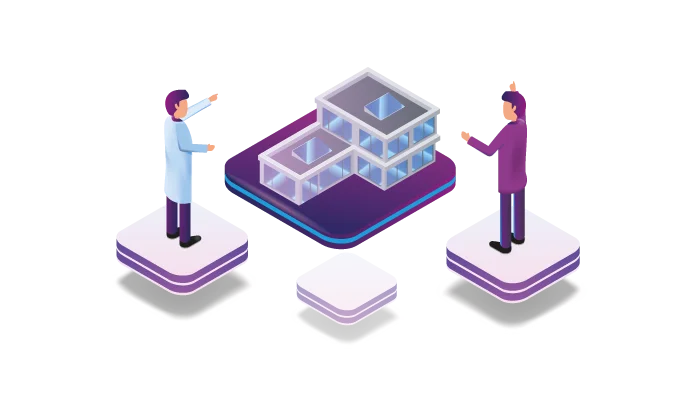
The construction remote monitoring refers to the monitoring of construction sites with the help of CCTV cameras, sensors, and other monitoring technologies.
With these technologies, managers can access real-time data, make informed decisions quickly and improve project efficiency.
In this way, they can get updates on milestones, completion dates, and potential delays. Moreover, with real-time data in hand, project managers can allocate services such as labor, equipment, and material more efficiently.
Overall, construction remote monitoring helps in maintaining the quality of construction work. Construction monitoring is not limited to this it has several other benefits let’s discuss them.
Benefits Of Remote Construction Site Monitoring
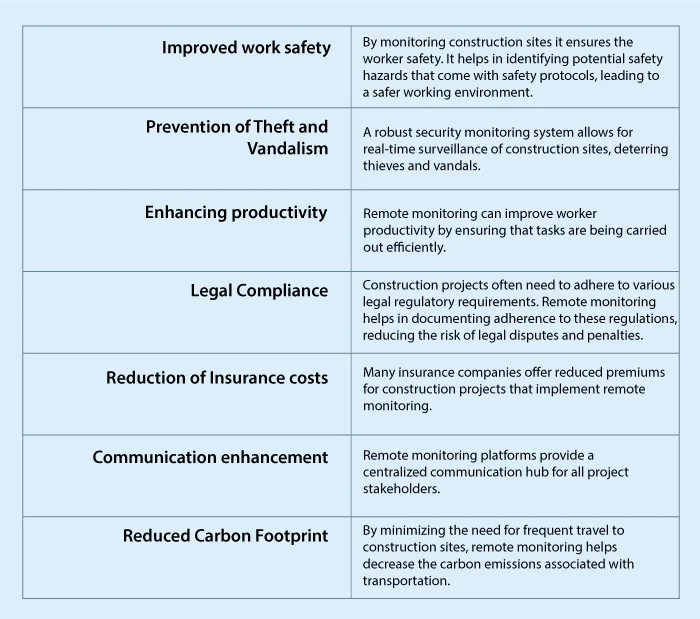
Improved work safety | By monitoring construction sites it ensures the worker safety. It helps in identifying potential safety hazards that come with safety protocols, leading to a safer working environment. |
Prevention of Theft and Vandalism | A robust security monitoring system allows for real-time surveillance of construction sites, deterring thieves and vandals. |
Enhancing productivity | Remote monitoring can improve worker productivity by ensuring that tasks are being carried out efficiently. |
Legal Compliance | Construction projects often need to adhere to various legal regulatory requirements. Remote monitoring helps in documenting adherence to these regulations, reducing the risk of legal disputes and penalties. |
Reduction of Insurance costs | Many insurance companies offer reduced premiums for construction projects that implement remote monitoring. |
Communication enhancement | Remote monitoring platforms provide a centralized communication hub for all project stakeholders. |
Reduced Carbon Footprint | By minimizing the need for frequent travel to construction sites, remote monitoring helps decrease the carbon emissions associated with transportation. |
Understanding Modern Security Technologies At Construction Sites
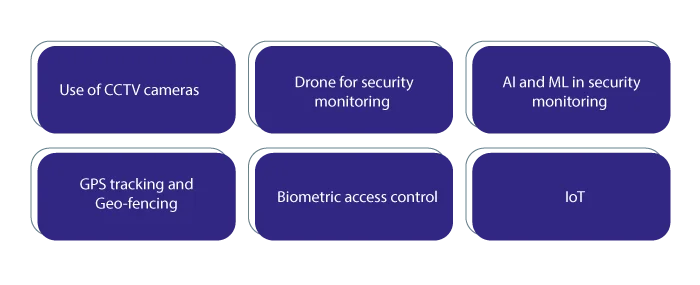
Security at construction sites is crucial for ensuring the safety of workers, preventing theft and vandalism, and maintaining the overall integrity of the project.
The construction remote monitoring is essential to ensure the safety of workers, prevent theft and vandalism & maintain the overall integrity of the project.
Use of CCTV cameras
The use of remote construction site monitoring with high-definition cameras with remote access capabilities allows real-time monitoring of construction sites. With the use of Closed circuit television CCTV cameras play a crucial role in construction site surveillance.
Drone for security monitoring
Drones have emerged as a potent asset when it comes to construction site security monitoring. It has the capability of offering an aerial viewpoint enabling the coverage of expansive areas in notably shorter durations.
Moreover, outfitted with high-resolution cameras, drones possess the capacity to capture real-time energy and videos.
AI and ML in security monitoring
In remote construction monitoring, AI and ML are like smart helpers that learn from data. They can recognize unusual activities or patterns that might indicate security issues.
In this way, they alert managers to potential problems so that they can act quickly.
GPS tracking and Geo-fencing
When it comes to tracking and setting boundaries, GPS and Geo fencing came into play. With GPS tracking it helps to keep tabs on equipment and materials by using satellite signals.
On the other hand, Geo fencing is like drawing a virtual line around the construction site on a map. If something or someone crosses that line one can get a notification, adding an extra layer of security.
Biometric access control
The biometric access tool is amazing, instead of keys and cards, this technology uses unique body features like fingerprints or eye scans to allow only authorized people onto the site.
However, these technologies work together with custom construction solutions that are designed specifically for each site’s needs. By using them it accesses customer solutions and remote monitoring software.
IoT
IoT is among the popular technologies that play a crucial role. It’s all about connecting everyday objects to the internet, and it’s being used in construction sites too.
Picture this, sensors are placed around a building site that can send information to a central system. This helps to track things like temperature, humidity, and even equipment usage, all in real-time.
Software Used In Construction Remote Monitoring
In the world of real estate technology and property trends in 2023, there are some really useful examples of software that help keep an eye on construction sites from afar.
Take a look at them.
Holo Builder
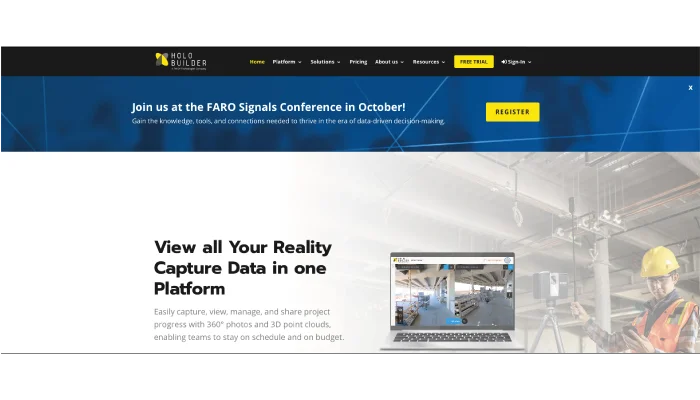
First of all, we have got Holo Builder, a cutting-edge tool that relies on the smarts of AI.
This wizardry helps with documenting and evaluating how construction is unfolding. Think of it as making a virtual twin of a building – a 360° digital copy that you can access from wherever you are. Thanks to this, HoloBuilder is a champion of automating remote monitoring in construction.
PlanRadar
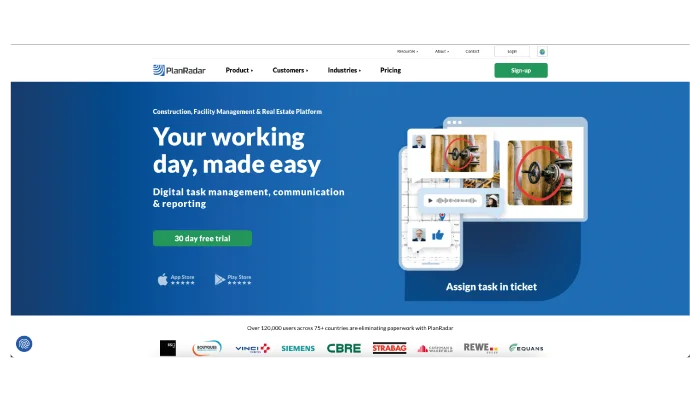
Moving along, there’s PlanRadar.
This is like the watchful guardian of remote construction monitoring software. It does more than just oversee – it lets you manage issues and create records of the building process.
And the best part?
It’s like a digital clubhouse where everyone involved can work together, thanks to the magic of cloud technologies. With PlanRadar, all those crucial construction site documents, photos, and plans are just a click away, no matter where you are.
B2W
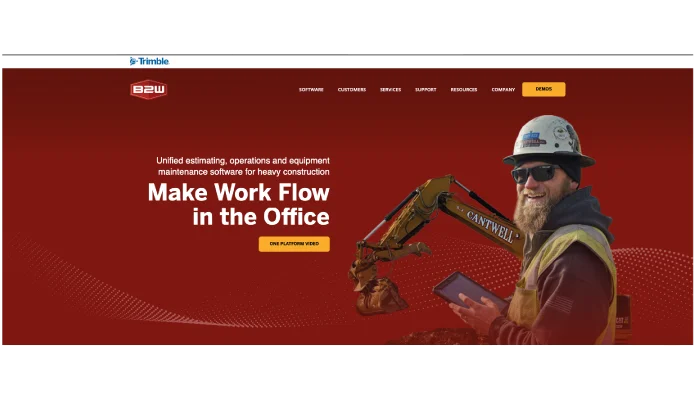
Next, let’s talk about B2W.
It’s essentially a digital toolkit for the folks working on-site. It lets them make, edit, and send field logs. But that’s just the beginning – all that collected data turns into a treasure trove of insights. You can track how construction is coming along, keep an eye on the stuff you need, and even keep tabs on the crews that are subcontracted.
Building Radar
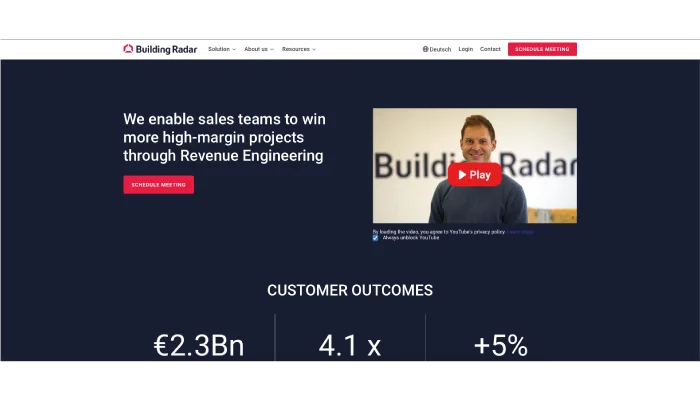
Now let’s not forgot about building Radar. Imagine having a superhero that spots new construction projects as they pop up.
Well, that’s building radar for you. Not only does it find these new projects but it also watches over their progress. So if you are itching to know what’s getting built nearby, building radar has the answers.
BuilderStrom
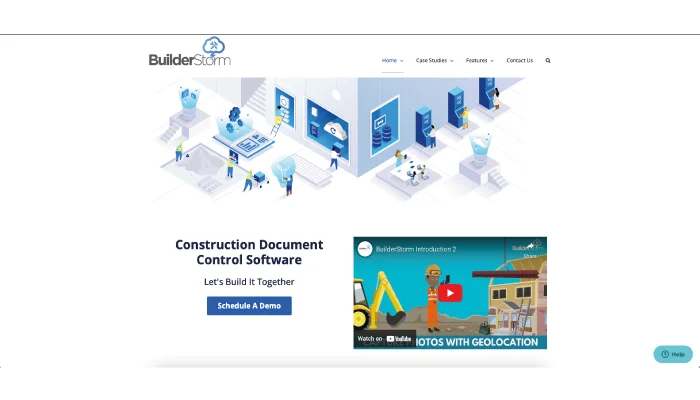
Lastly, we have got Builder Strom. This one is like having a construction manager in a digital form. It’s incredibly flexible- you get to pick the tools you need, kind of like creating your superhero toolkit. From handling projects to making important documents, this software got your back.
Overall, these software superheroes are stepping up to make remote construction monitoring a breeze. With IoT and real estate website design and development; they bridge the gap between construction sites and the digital world.
Is It A Good Idea To Build Your Own Monitoring System?
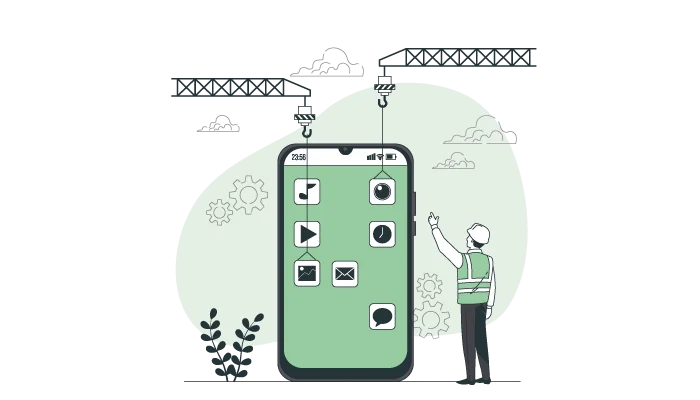
If you want to invest in developing remote monitoring software and you’ve looked at the popular software options for remote construction monitoring and haven’t found the perfect fit for your needs, don’t worry.
We have the perfect option to make your custom solution that works just right for your business. The remote construction monitoring software that’s already out there might not be a great match for every construction company.
Sometimes, it might lack the important features you need or be too complicated and old-fashioned. That’s why creating these systems is becoming a big deal, especially for new construction companies starting. They can easily build to-use solutions with exactly the features they need. Plus, they might even end up selling their unique construction monitoring software to other businesses later on.
How much does it cost to develop construction remote monitoring software?

If you want to develop remote construction technology and want to know the cost to develop the construction remote monitoring software it’s better to consult with experts.
However, we are providing you with a rough estimate that will give you an idea of the development cost.
First of all, the is important to consider factors when determining the cost of developing software.
- Number and complexity of features
- Selected tech stack
- Size of the development team and their salary rates
Now here are steps of the process of creating remote constructing monitoring software along with its estimated cost for each stage:
Discovery & Research Stage Time
280 hours Approximate Cost: $11,200
During this stage, business analysts study software requirements and assess goals, strengths, and weaknesses. Market research and competitor analysis are conducted. The design team creates prototypes, evaluating technology, functions, and aesthetics against client expectations.
Development Time
640 hours Approximate Cost: $25,600
In this phase, backend developers work on the server part, while frontend specialists handle the client side of the remote construction monitoring system. Designers and developers collaborate to deliver a functional product.
Testing and Launching Time
240 hours Approximate Cost: $9,600
Testing and launching are pivotal for remote monitoring solutions. User feedback is collected to enhance functionality, improve user-friendliness, and eliminate bugs.
Writing Technical Documentation Time
40 hours Approximate Cost: $1,600
This final step involves creating documentation for the application, including the product manual.
Here’s a summary in a table:
Development Stages | Hours | Approximate Cost |
| 1. Discovery & Research | 280 hours | $11,200 |
| 2. Development | 640 hours | $25,600 |
| 3. Testing | 240 hours | $9,600 |
| 4. Technical Documentation | 40 hours | $1,600 |
| Total | 1,200 hours (5 months) | $48,800 |
Remember, this is an approximate breakdown, and the actual cost may vary based on features, team composition, deadlines, etc. For an accurate calculation, feel free to contact us for a detailed quote.
Conclusion
The impact of remote monitoring in construction is truly revolutionary. Technology empowers construction professionals to address issues and oversee progress without being physically present on-site, optimizing efficiency and budgets.
If you are seeking remote monitoring software to enhance your construction workflow, rely on Nimble Appgenie a leading real estate app development company. With expertise in crafting monitoring systems and real estate software, we are here to support your needs. Feel free to reach out.
FAQs

Niketan Sharma is the CTO of Nimble AppGenie, a prominent website and mobile app development company in the USA that is delivering excellence with a commitment to boosting business growth & maximizing customer satisfaction. He is a highly motivated individual who helps SMEs and startups grow in this dynamic market with the latest technology and innovation.
Table of Contents












No Comments
Comments are closed.